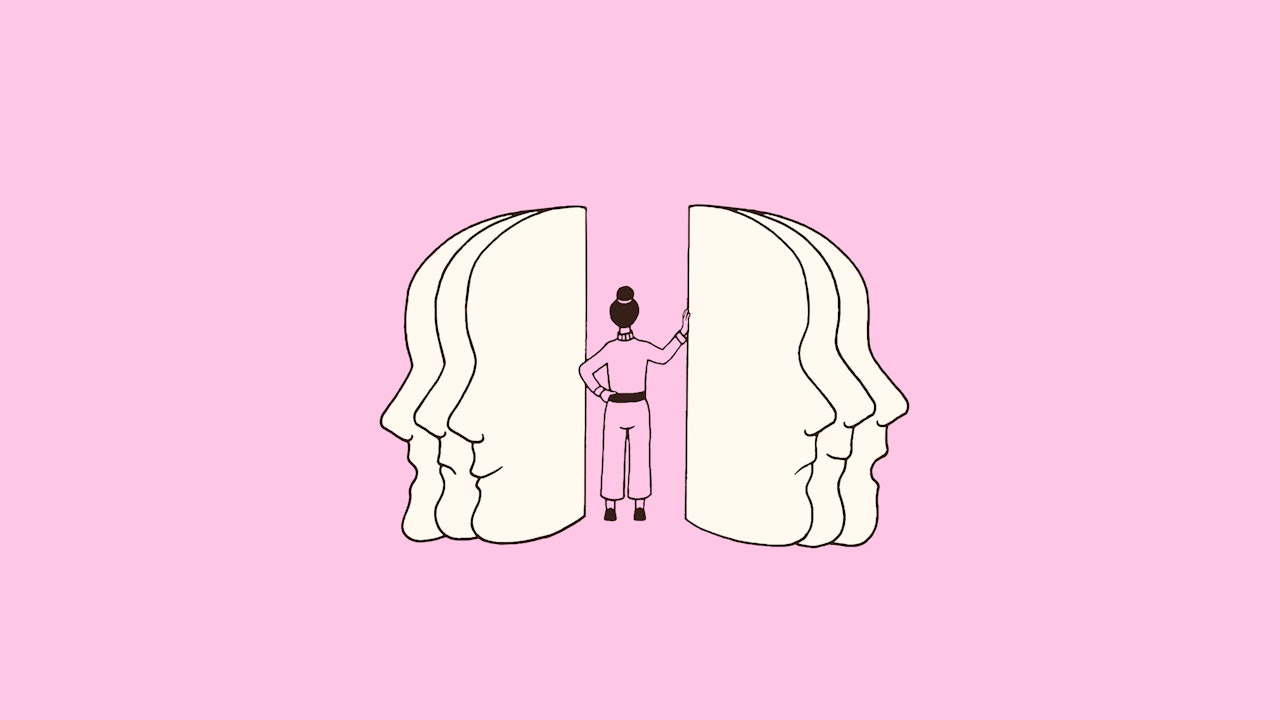“They’re the rule-breakers”: Unlocking neurodiverse talent with Theo Smith, advocate & HR expert

Dr. Jazz Croft
21 March 2024

Content
- What are the most common concerns when working with organizations wanting to engage with neurodiversity?
- What kind of impact do you see when employees become more open about neurodiversity?
- What role does leadership buy-in play in prioritizing neuroinclusion?
- Managers play a pivotal role in creating culture and bridging the gap between employees and executive leadership, how can organizations support them?
- Research shows that neurodiversity can bring mental health challenges, do you think organizations are addressing this link?
- Are you hopeful that more discussion and awareness will make workplaces more neuroinclusive in the future?
Leaders are missing out on the benefits of neurodiverse talent due to stigma, with 50% of leaders and managers saying that they wouldn’t hire neurodivergent workers. But with approximately 1 in 5 people identifying with traits of neurodivergence, these attitudes are marginalizing employees and limiting the innovators who think differently.
Neurodivergent workers are also at greater risk of mental health challenges, with 70% experiencing mental health difficulties. Amongst the headlines and often misleading social media content on such a hot topic, how can leaders foster neuroinclusion to support better mental health and performance?
Theo Smith, leading advocate and HR expert, has, quite literally, written the book on neuroinclusion for the workforce. Co-authored with academic Amanda Kirby, Neurodiversity at Work is a handbook and manifesto for organizations to take a fresh look at their practices, from hiring to meeting structures, to make these areas more inclusive and foster innovation.
To create more neuroinclusive workplaces, we need to take a whole-organization approach. That means better support for neurodiverse individuals, training for managers that equips them to create neurodiverse teams, and a culture of neuroinclusivity led from the top.
In this feature, Theo shares his experiences working with some of the world’s largest organizations. We look at the crucial connection between mental health and neurological differences and how each level of an organization can affect positive change.
What are the most common concerns when working with organizations wanting to engage with neurodiversity?
Many organizations are worried that advocating or discussing neurodiversity will open Pandora’s box, and there’s concern about whether we’re ready to lift the lid or what will happen. Will customers react badly? Will they get an influx of employee demand?
But when organizations do lift the lid, employees feel like they finally have a voice. A positive voice. More and more organizations who take the first step are realizing they’re not seeing negative outcomes but enabling better conversations and providing better employee experiences.
We won’t see every organization embrace neuroinclusion, but a proportion will prioritize this and see incredible opportunity if they work to get this right. Organizations who see the opportunity to grow, to become the most innovative, to create the best products, who choose to support those innovative thinkers whose brains work differently and challenge the status quo.
Case study: Award-winning inclusion at EY
EY improved accessibility by adding alternative formats to recruitment materials (short-form text, audio content, short videos). Theo credits its success to looking at the details: “Often we get too worried about the whole picture rather than something tangible that we can then replicate at a wider scale.”
There’s an element of being brave and bold and showing you’re willing to put yourself out there. Advocates are doing this on a daily basis and I think organizations can do as well.
What kind of impact do you see when employees become more open about neurodiversity?
After neurodiversity awareness training at Berkley Car(a leading European healthcare provider), the company found that conversations around neurodiversity were shifting to the hallways and breakrooms. Almost overnight, ADHD, dyslexia, and autism went from not being discussed to being part of everyday conversations, stripping away stigma.
On a local level, that shift is small, but it’s huge on the global level of an organization. The company also saw a positive impact on customer experience because workers applied their knowledge to patient care.
You’re not paying tons of money for change to make workplaces neuroinclusive. You’ve enabled human beings to have conversations they were afraid to have because of stigma.
What role does leadership buy-in play in prioritizing neuroinclusion?
When prominent leaders open up about their experiences, it has a significant impact. At ASML Holdings(a semiconductor business with $25bn revenue), the co-chairman and CTO has shared his difficulties reading and writing due to dyslexia.
It shows you can be very successful with these challenges. So much so, ASML attributes its success and innovation to targeting neurologically different talent. At other organizations I’ve worked with, senior leaders have driven change because of their own experiences.
You can read about Unmind Chief Product Officer, Gavin Wade, and his neurodiversity journey here.
If you can’t find that advocate at senior level, you’re going to struggle. The companies I’ve worked with who have taken neuroinclusion beyond conversation have always had somebody near the top who wants to make a difference.
Managers play a pivotal role in creating culture and bridging the gap between employees and executive leadership, how can organizations support them?
I do believe that the middle management piece is not supported enough. You go and hire an autistic individual, but what happens when you fail that autistic employee because you didn’t fully understand their needs and how to get the best out of them?
In a recent workshop with 20 managers, two shared different experiences of supervising neurodivergent employees and three disclosed they have neurodivergent children. Not only did the training help two managers improve how they support employees, but it also made three managers feel accepted as parents.
The training isn’t telling managers how to do their job, it’s opening up the conversation to allow that community of managers to help each other by positively challenging some of their thoughts and ideas.
In my work with managers, it’s the brave ones who go in saying, ‘I’m not necessarily doing great in this area, I haven't always done best by some of my team members. But I want to, I just don't know what to do’.
Research shows that neurodiversity can bring mental health challenges, do you think organizations are addressing this link?
Looking back on my own journey and many others, you don’t realize that mental health is attached to your neurological makeup and how that knowledge could have meant better dealing with challenging situations. The nature of how my brain works means I can be creative, entrepreneurial and adapt to change well, but the cost of that is burnout.
If we can help employees understand their neurological makeup, we can help them understand their strengths and challenges. It means if you have high cognitive abilities in narrow areas (spikey profiles) and you don’t understand what your challenges are, these challenges will overwhelm your ability to perform in areas you have strength in. If we think of that in the context of health and wellbeing, you’ll have a crisis of self and self-worth if challenges overwhelm your abilities. Therefore, dealing with wellbeing without understanding neuroinclusion and neurodiversity is a band-aid approach.
The power of advocacy
Within organizations, it’s important to recognize the individuals who bring their own knowledge and experience to advocate for wellbeing in a variety of roles. For neurodiverse employees, knowledge-sharing and visibility can be a lifeline when faced with professional barriers.
Based on evidence that peer support can prevent burnout and reduce the health risks associated with social isolation, Unmind’s Wellbeing Champions training empowers employees with the skills to support their own mental health, support others, and advocate for change.
Linking neurological makeup and wellbeing goes beyond neurodivergence to everyone because any of us may hit a point where how our brain works changes significantly. Whether there’s menopause or perimenopause, a significant crisis or an accident, all these events can change how our brain works.
Are you hopeful that more discussion and awareness will make workplaces more neuroinclusive in the future?
It’s hard to know. Will the world become less divisive? As a human being, I see the best in people and opportunities, but we can’t dismiss the fact that some individuals don’t see it that way.
We live in a divisive world at the moment, and there will be those people who absolutely won’t believe in neurodiversity, won’t buy into it, won’t accept it, and some of those people may actually be autistic or have ADHD themselves.
We as a community need to help each other up. One of the most powerful things about neurodiversity is understanding it and challenging misinformation and stigma. When I talk about my experiences, I talk about every single individual within an organization trying to make positive change. And right now, many of us are starting to put our hands up and say ‘no more.’ When I think about them, I do see a positive future.
Key points for organizations
- Recognize the business benefits of organizational support. Unmind's research in the legal sector shows employees reporting greater organizational support are less likely to quit their jobs or report poor performance due to mental health difficulties.
- Understand the power of breaking the silence on neurodiversity. Combating stigma and starting conversations can improve employee experience and customer experience.
- Focus on tangible changes that can scale (e.g. modifying recruitment practices), as this can be more effective than bigger-picture thinking.
Key points for leaders
- Leaders who share personal experiences of neurodiversity can drive positive change across organizations.
- Training resources for leaders to improve knowledge and confidence to address wellbeing can support team-wide wellbeing. Unmind offers flexible, on-demand content for leaders developed by psychologists that covers mental health and neurodiversity.
- Signposting and improving access to coaching and therapy can support neurodivergent employees facing professional barriers and an increased risk of mental health challenges.
To find out more about how Unmind can support whole organizational change for sustainable high performance, book a call with an Unminder.
If we look historically at those people who challenged the status quo, they are disproportionately autistic and ADHD. They’re the rule-breakers. And rule-breakers are going to create avenues for more rule-breakers. And that’s where we’ll create space for change we need in society.”
About the Author

Dr. Jazz Croft, Senior Scientific Liaison
About the Author
